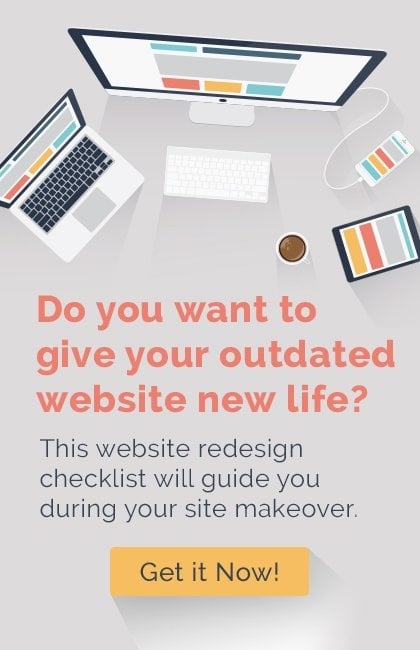
Should You Consider A Growth Driven Design Strategy?
In this day and age, every business understands the importance of having a company website. Even local mom and pop shops have a web presence, whether it’s a basic website or a social media page. However, not everyone realizes that there are different ways to build your website. If your website is the foundation for all of your online marketing efforts, then consider implementing a growth driven design. It is true that when properly implemented, traditional website designs can still be very effective. However, growth driven designs have their own set of unique advantages worth taking a look at.
What Is A Growth Driven Design?
Traditional websites tend to be designed all at once. Meaning, once the website goes live, it’s finished–everything is complete. Growth driven design involves a more incremental process. It’s not completely finished once it launches.
Instead, you continuously work on the website, implementing design elements based on data collected from visitors interacting with your site. This allows you to design your website from top to bottom based on buyer observations which, thereby, improve your web design over time. Additionally, it prevents design elements from growing stale and eliminates the risk of being stuck with poor design choices.
Similar Article: Growth-Driven Web Design – Is It Right For Your Company?

The Benefits
The following are a few of the advantages to choosing a growth driven design:
Eliminate the need for massive overhauls – Traditional website designs often require complete redesigns after only a few years. Because a growth driven design requires that your website be regularly updated, major overhauls won’t be needed.
Meet the needs of your users – While traditional website design certainly makes use of some data, a lot of the design elements will no doubt be based on the personal preferences of those in charge of designing the site. Likewise, they may use elements that a competitor has used to great effect. However, your site design will be more effective if it’s tailored to what your users want, not what you want (or what your competitors use). A growth driven design is a user-driven one.
Launch your website quickly – It can take some time to launch a traditional website design. This is because once it’s launched, it’s done. Since a growth driven design requires consistent work on the website, it’s not expected to be finished once launched. This means that you can get it up and running much quicker.
Support a goal-oriented strategy – Long-term marketing goals require constant work. Being able to consistently improve your website will make it easier to support the goals that you’ve established.
Make better use of your resources – There are certain choices that you may have made with a traditional website design that you’ll just be stuck with until you do a redesign. This ends up being a waste of resources, whereas with a growth driven design, you can change what’s not working.
Shift, pivot, or adjust on the fly – Not only does a growth driven design make it easy to make needed changes on the fly, it also makes it easy to change course should you shift in regards to your business goals or model.
Similar Article: 6 Web Design Principles to Increase Conversions
Implementation
There are three main stages when it comes to implementing a growth driven design. These stages are as follows:
 Strategy – Creating a strategy for a growth driven design is not that dissimilar than creating a traditional web design strategy. You’ll need to identify your goals and what you want your website to achieve. You should also perform extensive research so that you can make as many data-backed decisions as possible in the initial stages of your site design.
Strategy – Creating a strategy for a growth driven design is not that dissimilar than creating a traditional web design strategy. You’ll need to identify your goals and what you want your website to achieve. You should also perform extensive research so that you can make as many data-backed decisions as possible in the initial stages of your site design.
Launch Pad – During this stage, you’ll launch a site that looks and performs better than what you have but that isn’t finalized. The launch pad is a foundation on which you’ll build your website. Start with creating a wish list that will help achieve your objectives. Narrow that list down to a list of priorities that need to be implemented from the start.
Improvement – The third stage is never-ending–it’s the stage in which your launch pad site goes live, data collection on visitors begins, features are added, and improvements are made based on that data.
One of the big advantages is the ability to continually adjust your website design based on how users are interacting with your site. This prevents your site from growing stale and makes it easier to meet the needs of your audience. While traditional web designs can still be effective, be sure to consider your website design options by looking into growth driven design as well.

Dan Gartlan helps companies of all kinds drive their business initiatives and achieve their goals with strategic marketing programs that deliver results. As President of Stevens & Tate Marketing, he has over 20 years experience across various industries, and continues to share his expertise to build brands nationwide.






